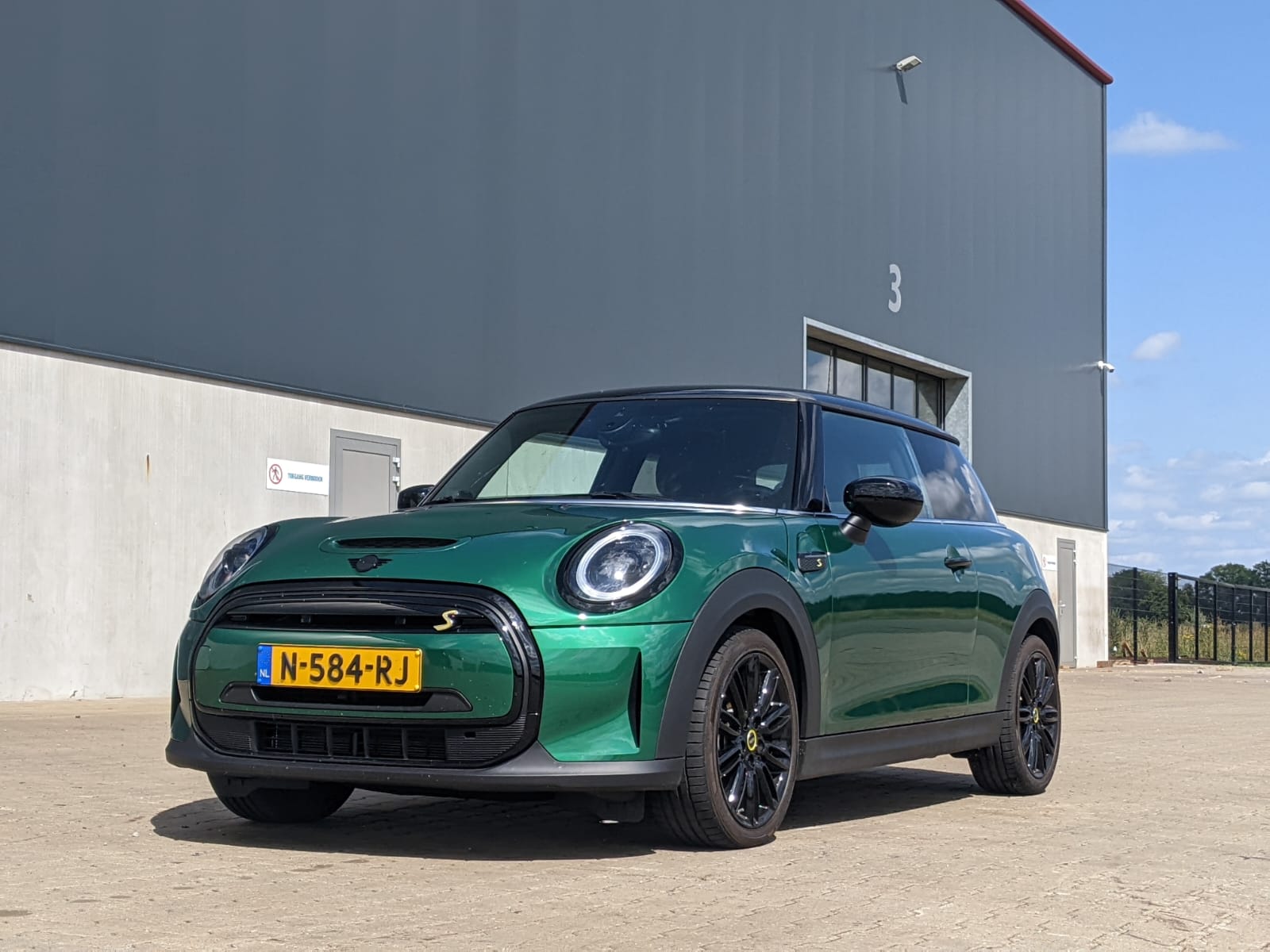Review – Mini Electric (2022)
Iconic city raiders
The Mini and the Fiat 500 are two compact cars that have their roots in the 1950s. The original design of both classics is so timeless that it still looks hip in 2022. Both modern reincarnations, meanwhile, are beginning to come of age. The ‘New’ Mini has been on the market since 2001 and the modern Fiat 500 saw the light of day in 2007. But the party is far from over for the two trendy city cars. Both models are now electrified and thus ready for the future. We recently drove the ultra hip all-electric Fiat 500E, now it’s time to test its rival: the updated Mini Electric.
Fresh face
The Electric has only been on the market since 2020, but Mini has already given it a substantial visual update. New light units, different bumpers, a different grille, updated taillights and an upgraded interior are some of the modifications. The nose is almost literally tightened. The bumper features clean lines and sharp vertical air intakes. The round fog lights at the bottom of the bumper have disappeared and are now integrated into the headlights. The grille has been aligned with the regular Mini models and now looks more like a “mustache. The body-colored bumper appears to run over the grille and also serves as a license plate holder.
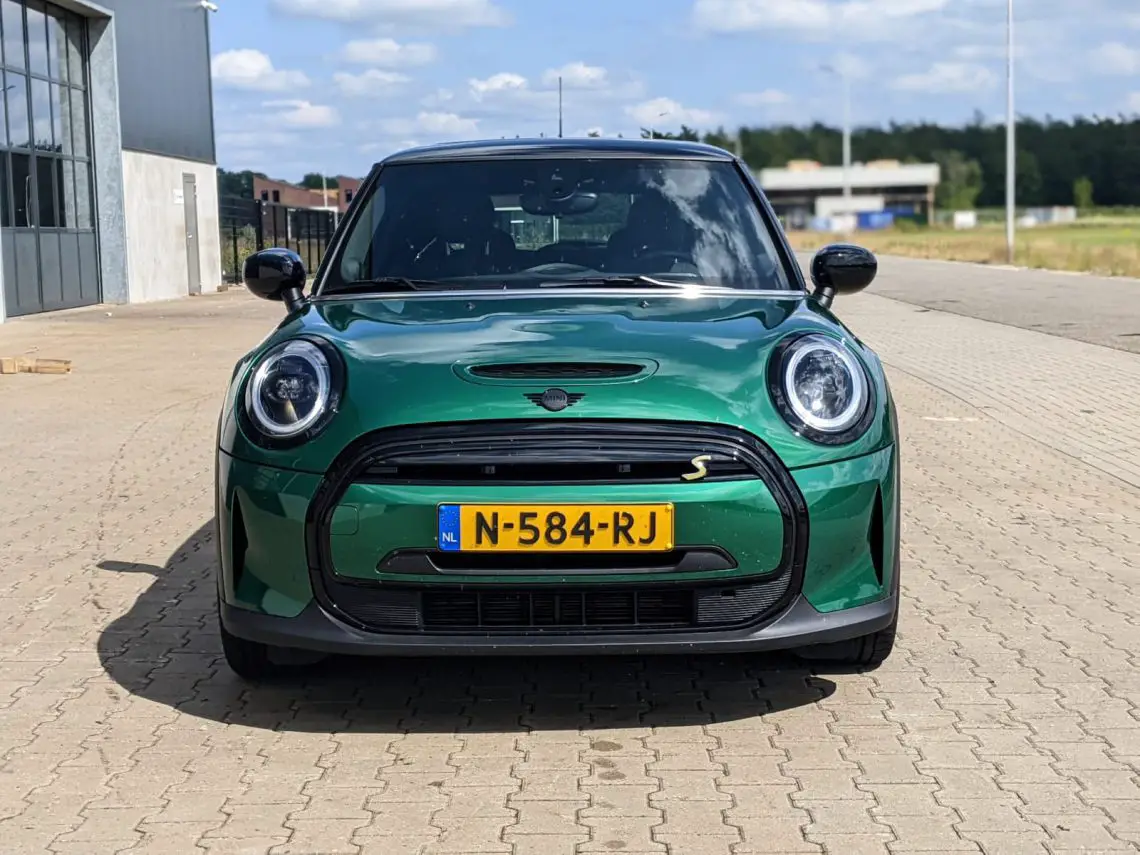
Other adjustments
On the side, the new contours of the wheel well surround stand out. Compared to the regular three-door, the Mini Electric stands about 18 millimeters higher on its legs. Necessarily, because this was the only way to place the battery in the bottom. Because it stands a little higher, despite the extra weight of the battery pack, you don’t scrape the ground with the bottom if you hit a threshold a little too hard. And what does such a Mini Electric weigh? The brand lists an empty weight of 1,365 kilograms. This makes the electric Mini about 145 kilograms heavier than the Cooper 3-door. Some plastic wheel arch guards make the extra space between the wheels and the body not noticeable.
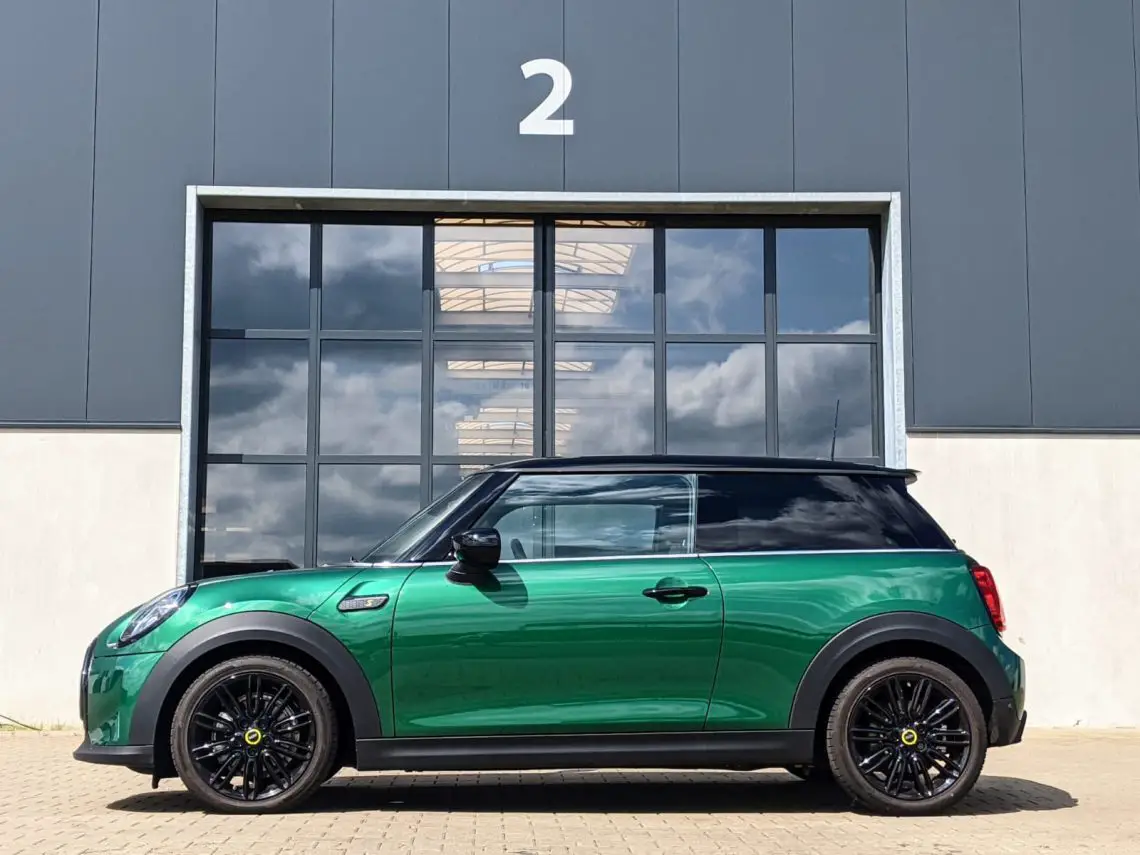
The Mini…is mini
On the back of the Mini Electric you get as standard the characteristic rear lights in Union Jack design, a substantial spoiler and a diffuser with integrated fog lights. While we’re discussing the rear, luggage space is 211 liters and 731 liters if you fold down the rear seats. That’s as much as a regular Mini 3-door with an internal combustion engine. This is because the battery pack is incorporated into the floor between the front seats and under the rear seat. Thus, no precious luggage space is lost. And the space is really precious, because it’s not much. Enough for your daily shopping, but if you’re going on vacation for two, you’ll soon have to fold down one section of the back seat to make room for a suitcase. It’s a situation that won’t happen often, but it’s something for vacationers to consider.
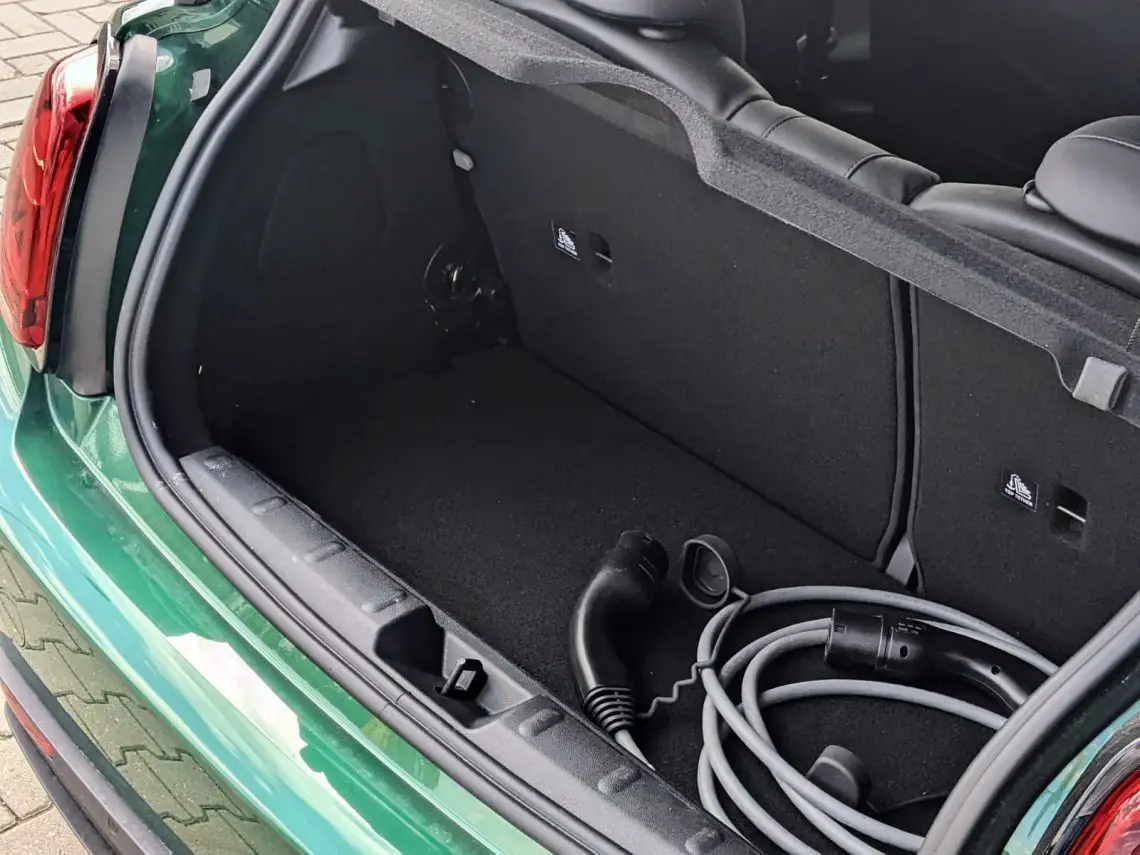
Better materials
The fact that Mini operates under the BMW banner is clearly reflected in the interior. It has been further refined with new materials and feels premium. Like being in a small BMW. The centrally located infotainment system – which has a playful LED light ring around it – houses a bright 8.8-inch touchscreen. Unfortunately, it doesn’t run BMW’s latest operating system, but it’s responsive enough. Behind the wheel, you get a round digital instrument cluster, on which you can read relevant information while driving and how many miles are left in the battery.
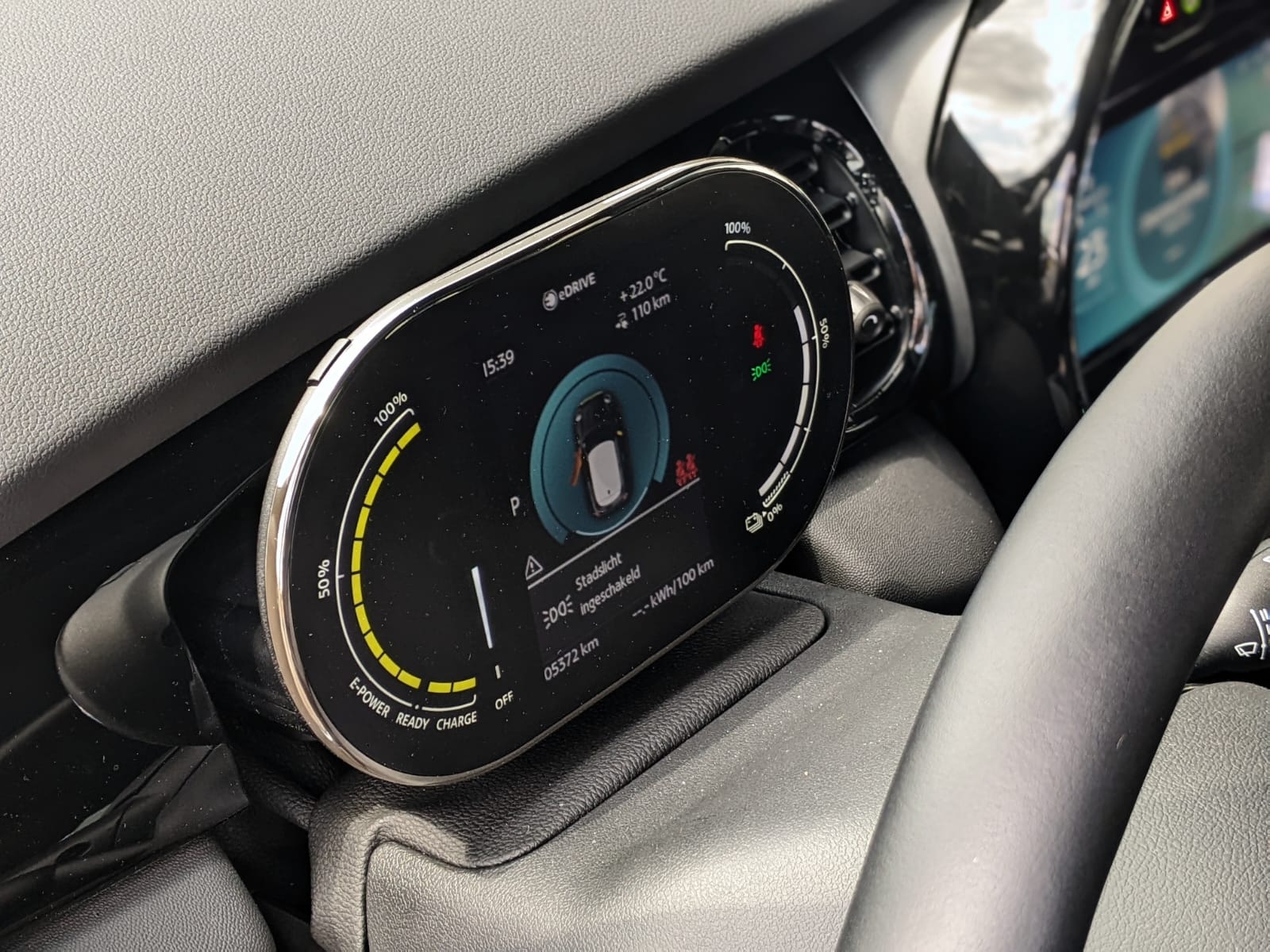
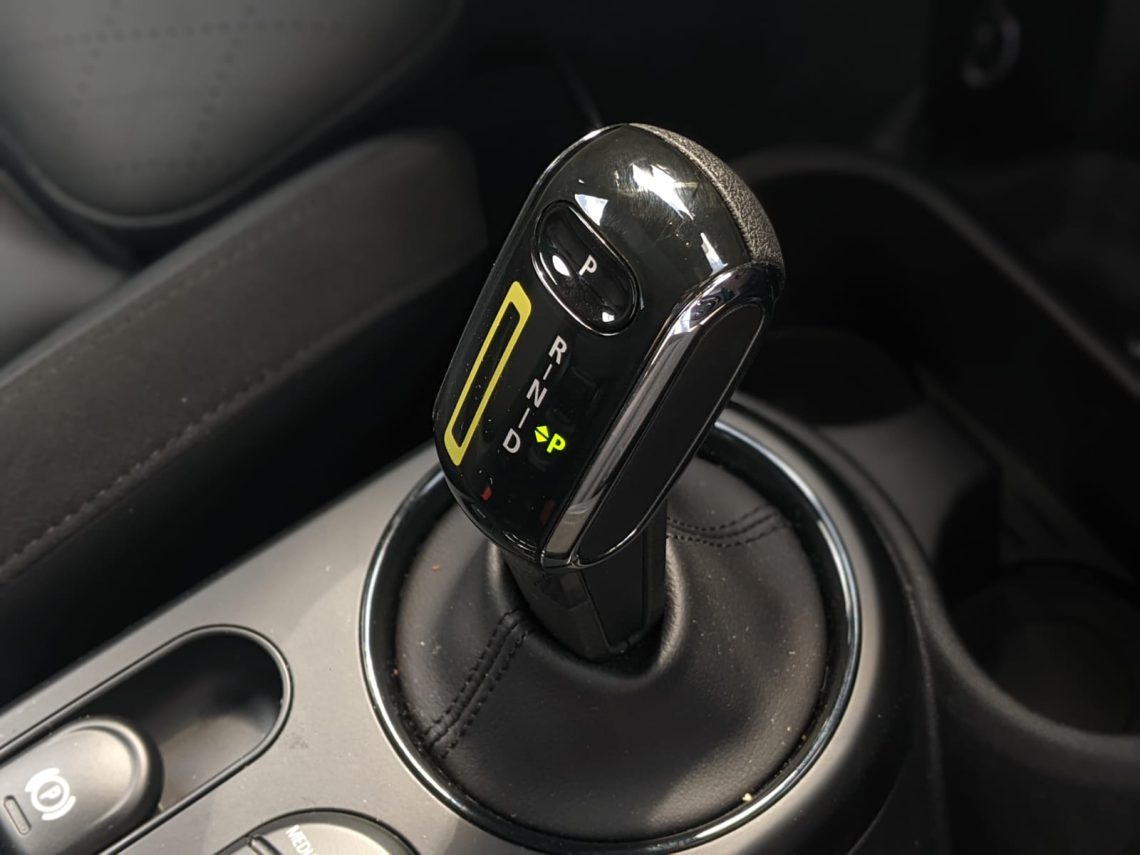

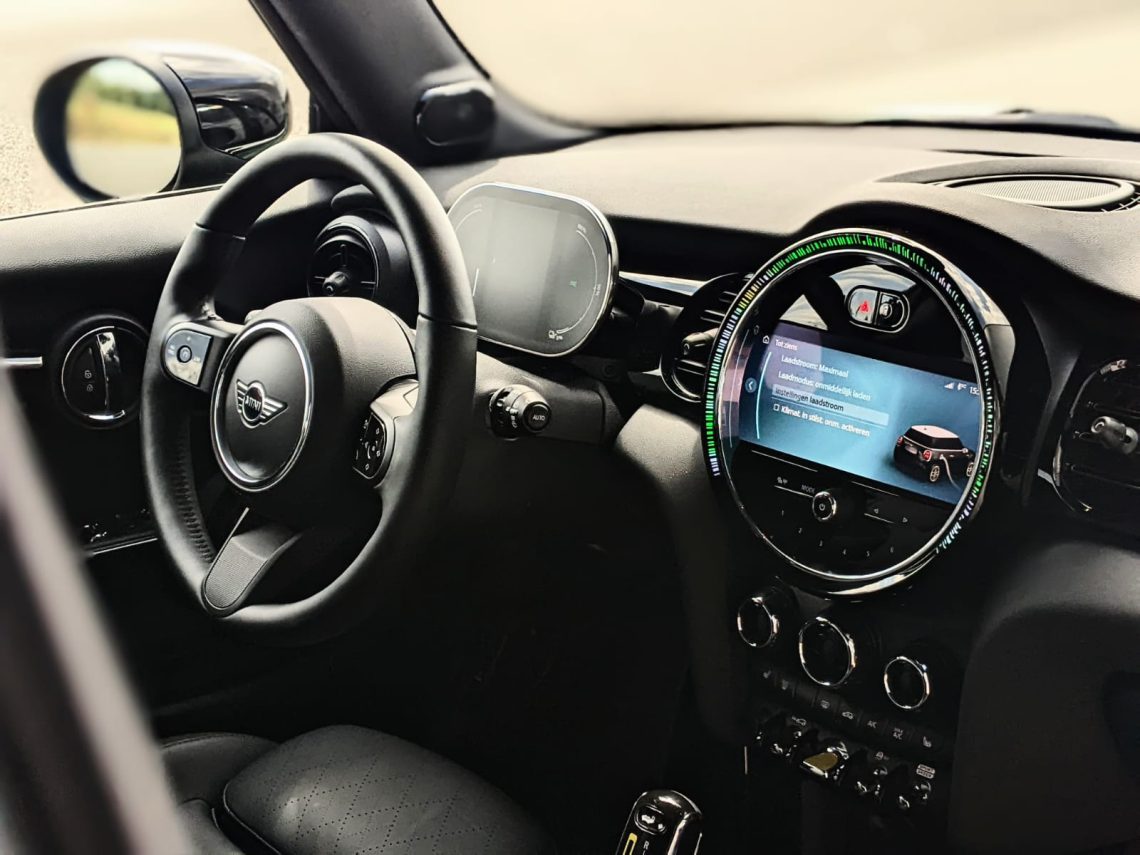
Range
When the battery pack is 100% charged, you can get up to 234 kilometers on paper according to the WLTP test standard. In the real world, you can easily take 50 kilometers off that. There is not much left, but it is enough for most Dutch people to drive to the office every day or to do the daily shopping. Recharge once a week and you’re good to go.

Your own charging station
If you use it more intensively, then having a charging station at home is a must. Charging can of course be done via a normal wall socket, but only when there is no other option. With the right wallbox, you can charge the Mini at home with 11 kW and it takes two and a half hours to charge the battery to 80%. In three and a half hours, the battery charge is 100 percent.
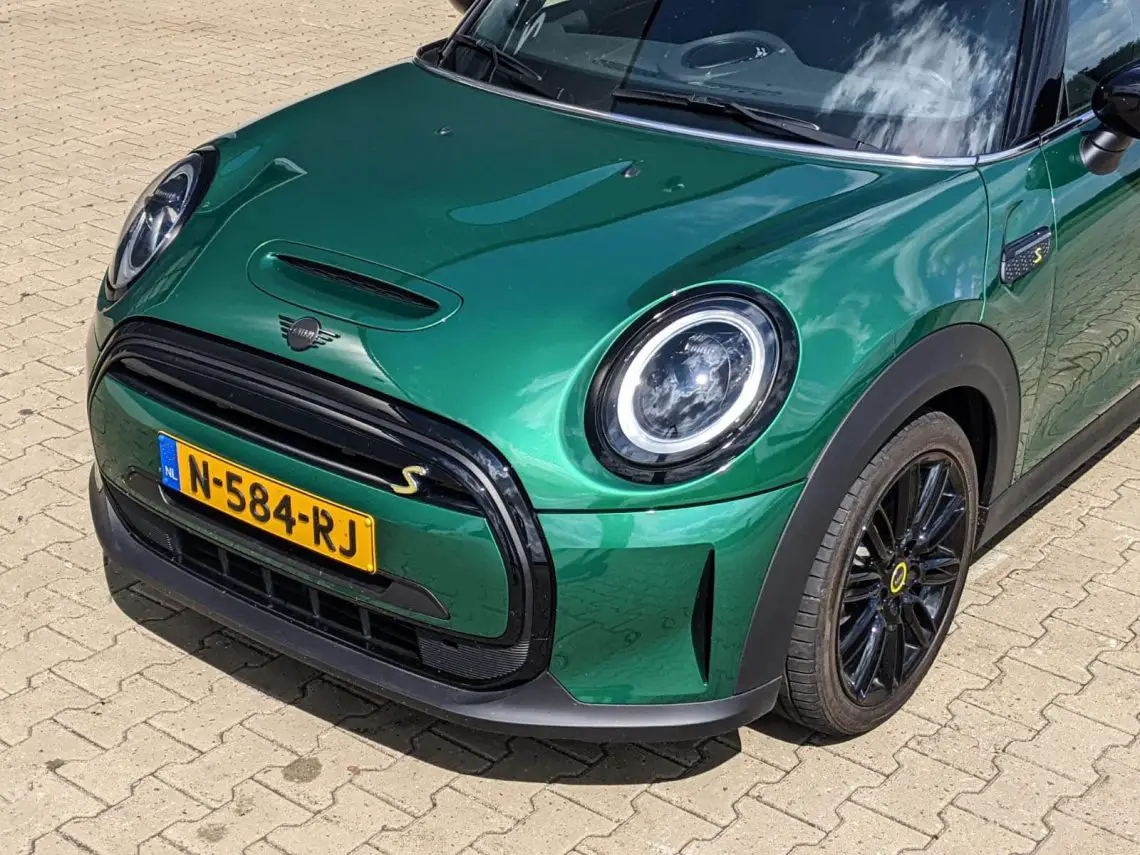
How fast can a Mini Electric fast charge?
If you want to visit the other side of the country from time to time, you’ll need a pass to fast-charge. A drive from Groningen to Amsterdam is otherwise not feasible. At a fast-charging station, the Mini Electric can handle up to 50 kW. Within 35 minutes, the battery is then charged to 80 percent. Free tip: If you are planning a longer trip, warm or cool the interior before departure using the Mini app. This saves a lot of energy along the way. You can just do that while it’s still on the charger. You can even set when it should start doing that. Convenient, if you want to get into a warm, fully loaded car every morning.

BMW Technology
Much of the technology in the MINI Electric comes from the BMW i3s. Mini itself doesn’t mention it, but the numbers on paper reveal that the Electric simply adopts the i3s’ powertrain. There is no shame in that. In the BMW i3s, this electric powertrain has already proven its worth. He also does not disappoint in the Mini.
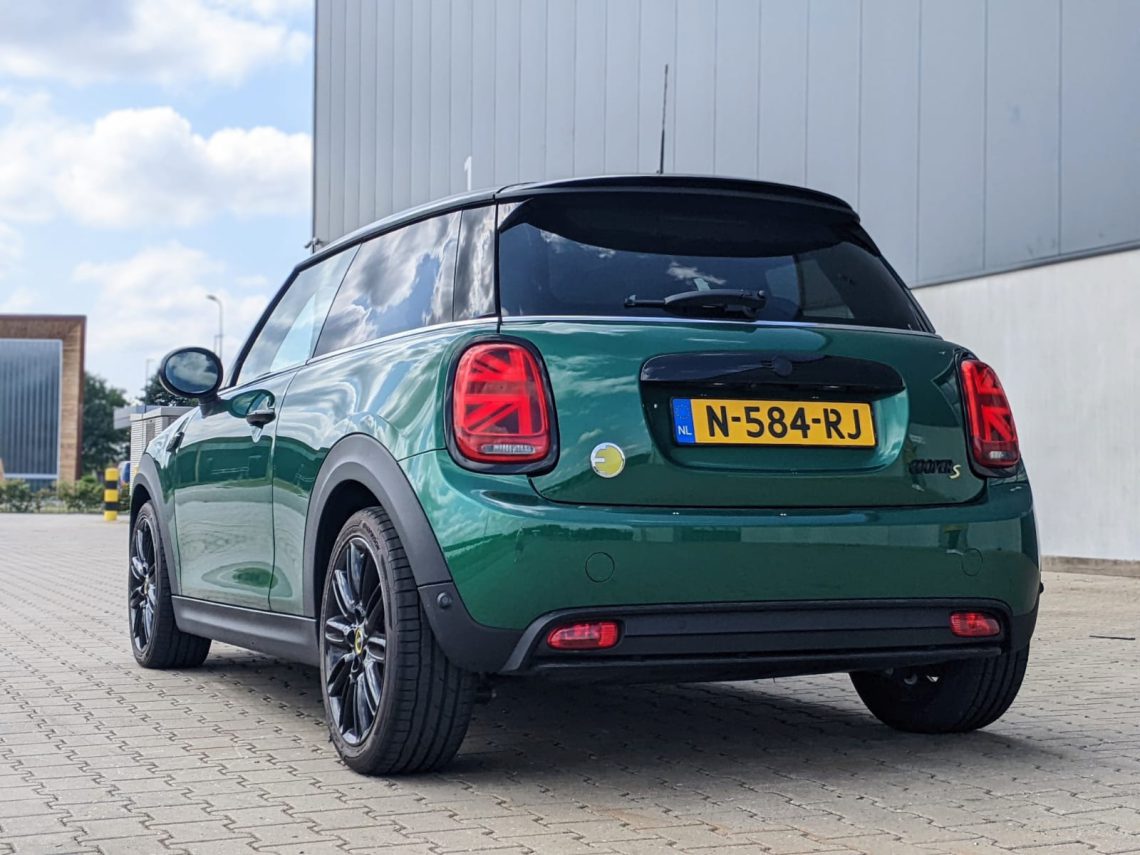
Quick Mini
The 184 hp and 270 Nm electric motor is nice and snappy. In 7.3 seconds, the Mini is at 100 km/h. That doesn’t sound bad, but in real life it feels much faster. Acceleration from 0 to 60 mph takes just 3.9 seconds and you can feel it. If you press the gas pedal fully when the traffic light turns green, you will be pressed firmly into the seat.
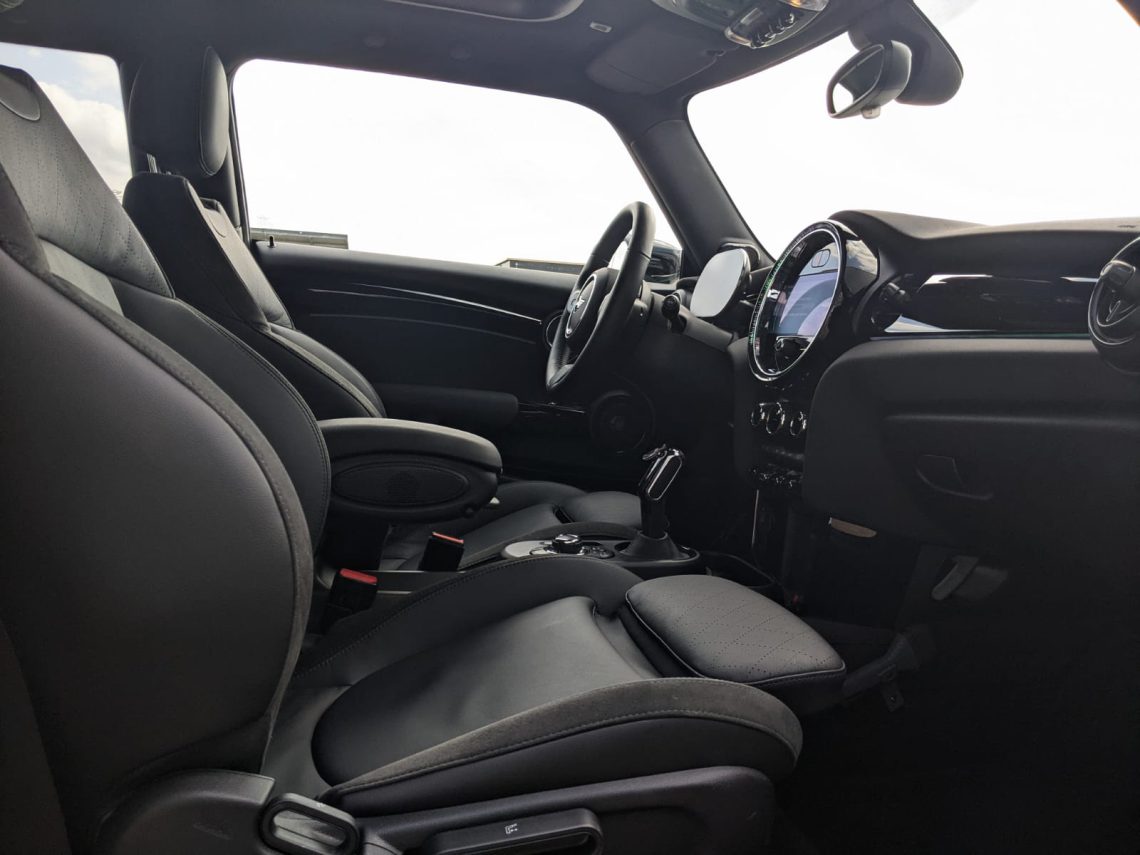
Kart Feeling
Because the car’s center of gravity is 30 millimeters lower than that of the sporty Mini Cooper S thanks to the battery pack, you can keep the gas pedal deeply depressed even when cornering. Understeer is not in the Mini Electric’s dictionary. The typical go-kart feeling that Mini is known for is also evident in the electric version.
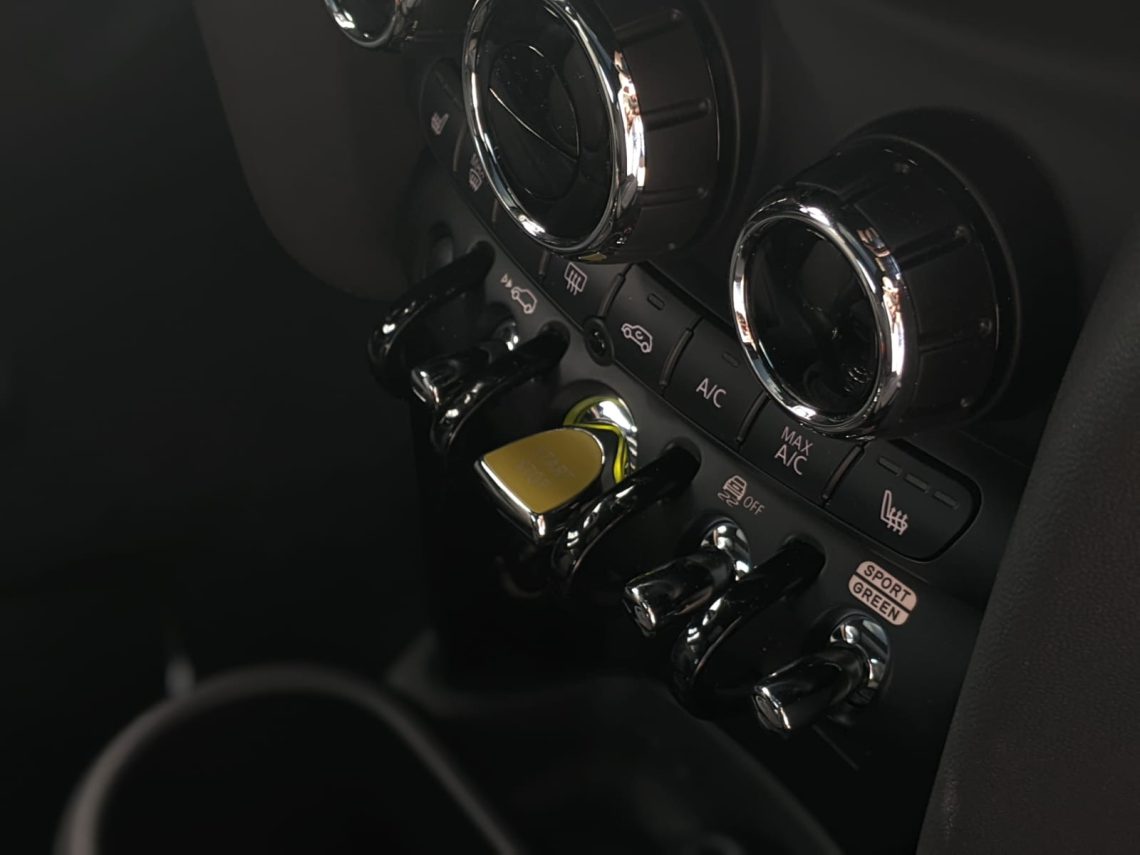
Four driving modes
There are four driving modes to choose from: Sport, MID, GREEN and GREEN+. In the GREEN and GREEN+ modes, the powertrain is geared toward maximum efficiency. In GREEN+ mode, additional comfort functions, such as heating, air conditioning and seat heating, are reduced or turned off to increase range. In Sport mode, the powertrain responds most alertly and the Mini steers most sportily. There is a nice amount of weight in the steering wheel, which makes the Mini feel extra sporty.

One pedal driving possible?
In the Electric, you can drive according to the “one pedal driving” principle. During coasting, the electric motor then acts as a generator, converting energy released during braking back into electricity. This is then stored in the battery, giving you another few kilometers of range. There are two modes that allow you to set how much the Mini brakes on the electric motor. In the highest setting, the Mini brakes so much on the electric motor that you eventually come to a stop. We personally really like that, because it means you actually only need your right foot while driving. For some people, it will take some getting used to.

What will the Mini Electric 2022 cost?
A new Mini Electric comes from 38,390 euros. As standard, Mini gives the Electric a fairly rich equipment. Think LED headlights, dual-zone automatic air conditioning, heat pump technology heating, auxiliary heating, an electric parking brake, Connected Navigation with 6.5-inch touchscreen and Apple CarPlay support and an instrument cluster behind the steering wheel with 5.5-inch color display. However, the option list is long and you can make it as crazy as you want. The consumer price of our test car is a solid 43,075 euros.
Competitors of the Mini Electric:
| Model | Price |
| Opel Corsa-e | 33,999 euros |
| Fiat 500e (24 kWh) | 23,099 euros |
| Renault Zoe | 34,790 euros |
| Honda E | 40,615 euros |

